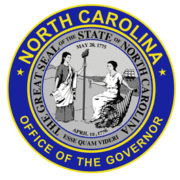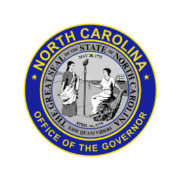Governor Cooper Gives COVID-19 County Alert Update
— press release courtesy of North Carolina Governor Roy Cooper and his office
Gov. Cooper Calls on North Carolinians to Stay Vigilant this Holiday Season
More than 90 percent of North Carolina counties now in the red or orange zone; Vaccines continue to be distributed to communities around the state
Today, Governor Roy Cooper and Secretary of North Carolina Department of Health and Human Services Dr. Mandy Cohen shared updates on the COVID-19 County Alert System, warning that more than 90 percent of North Carolina counties are now designated as red or orange.
“North Carolina needs to drive down our numbers. To do that, we all need to change our holiday plans if you haven’t already,” Governor Cooper said. “The best and safest option is to connect virtually or by phone. But if you gather in-person, keep it small and do it outside. Get a COVID-19 test before you go. Spread out the tables and chairs. Follow the modified Stay at Home Order and be home by 10 PM. And, always, always wear a mask.”
The County Alert System uses COVID-19 case rates, the percent of tests that are positive and hospital impact within the county to categorize counties into the following tiers:
- Yellow: Significant Community Spread
- Orange: Substantial Community Spread
- Red: Critical Community Spread
There are currently 65 red counties, 27 orange counties and only 8 yellow counties. Read the updated report to see where each county stands and how the alert system was designed.
“The county alert map shows how quickly things can escalate. As you think about the upcoming Christmas and New Year holidays please avoid traveling and gathering. If you absolutely must, get tested ahead of time, wear a mask all the time, keep it small and keep it outdoors,” said Secretary Mandy K. Cohen, M.D.
Governor Cooper and Dr. Cohen also highlighted updates on North Carolina’s distribution of two COVID-19 vaccines. The state expects to receive approximately 60,000 doses of the Pfizer vaccine and 176,000 doses of the Moderna vaccine. The Moderna vaccine does not require ultra-cold storage and is slated to go to 59 hospitals and 97 local health department sites.
Governor Cooper and health officials warned against traveling and large gatherings ahead of the Christmas and New Year’s holidays. The Governor also reminded people that the statewide mask mandate and Modified Stay at Home Order requiring people to be home between 10 PM and 5 AM will still be in effect through the holidays until at least January 8, 2021
Pastor Joseph Casteel from First United Methodist Church in Roanoke Rapids and Reverend James White from Christ Our King Community Church in Raleigh joined today’s briefing to discuss how critical it is for communities of faith to follow the safety measures while celebrating. They stress that the most important thing people can do for their communities this Christmas is taking the steps necessary to protect their communities, even if that means pausing or adapting traditions.
“The opportunity for you and your family to remain safe, an opportunity not to put anyone else at risk and, the freedom for you to choose the time for meaningful worship that works for you. It’s a win-win. There will be a myriad of online opportunities for meaningful worship. It will be okay,” Pastor Joseph Casteel said.
“Pastors, Rabbis and other faith leaders are often expected to have words of hope. Maybe we are all appropriately lost for words. What is most needed are actions and perspectives that will lead to life now and in the future,” Rev. James White said. “Perhaps we all need to figure out how to create celebrations in the midst of limitations. This is not as impossible as it may sound.”
The CDC is encouraging people to avoid traveling for the holidays. If continuing to gather, state officials urge North Carolinians to keep get togethers small and outside with social distancing and masks. People can also get a COVID-19 test ahead of gathering.
Read the full holiday guidance from NCDHHS.
###



